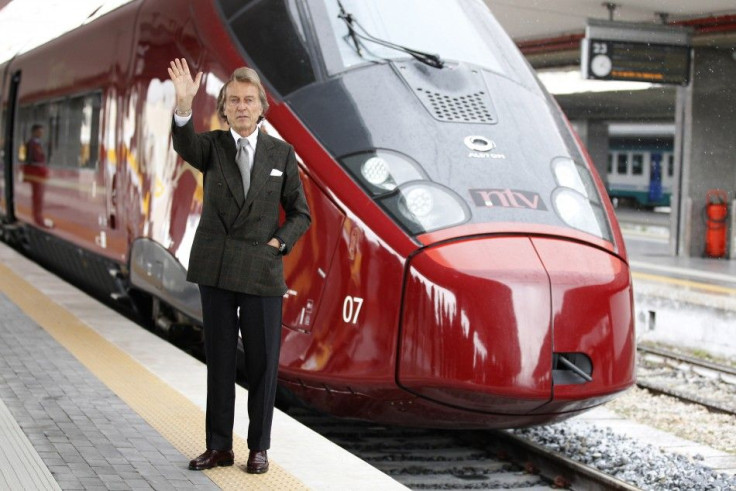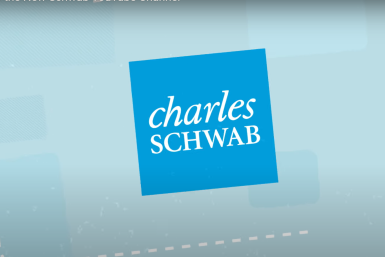Ferrari's Montezemolo Launches High-Speed Train

As Europe's first privately owned high-speed train hit 300 kph just outside Naples, Ferrari chairman Luca Cordero di Montezemolo smiled at the suggestion that he was addicted to risk and velocity.
Yes, he said. Yes, speed and risk, risk in terms of economic risk. I think an entrepreneur has to risk, if not, he is not an entrepreneur anymore.
Montezemolo and a consortium of private investors are taking a 1 billion euro ($1.3 billion) risk that they can provide better high-speed train service between major Italian cities than state-run Trenitalia, taking advantage of a 2006 European Union move to open up track to competition.
We have brought an end to one of the longest monopolies in the history of our country. Finally, Italian travelers and tourists can choose, he said.
The new company, called NTV, or Nuovo Trasporto Viaggiatori, starts service between Rome and eight other Italian cities on April 28 and will eventually have 25 trains - a new type of locomotive-free rolling stock that has an engine under each car to increase capacity.
Montezemolo and businessmen Diego Della Valle of luxury goods maker Tod's, Gianni Punzo and Giuseppe Sciarrone founded the startup in 2006.
They were later joined by Banca Intesa San Paolo, Italy's largest insurer Generali, businessman Alberto Bombassei from Brembo brake company and French state railway company SNCF, which took a 20 percent stake and provides know-how.
But Montezemolo, chairman of NTV, is clearly the leading man in a high-profile business script aimed at snatching 25 percent of Italy's high-speed train market by 2014 and breaking even the same year. It hopes to attract 8-9 million passengers a year by then.
Chiara Pelizzoni, a transport analyst for Nomisma, said NTV will not have too many problems attracting customers in the high-speed market.
The high end of the market will be easier to sell. There are customers willing to pay for good services and from an industrial plan point of view they have a good, experienced partner in SNCF, he said.
The real challenge will be if they try to enter the market for regional routes, where it is much more complicated to make money and where there are more regulations, she said.
The dapper Montezemolo, who looks younger than his 64 years and sports a Bobby Kennedy-esque mane of hair, has a breathless business resume and aristocratic family lineage that fuels his confident, can-do style like high-octane petrol fuels a Ferrari.
He organized the 1990 World Cup football tournament, was chairman of carmaker Fiat, managed Italy's America's Cup sailing race challenge team, headed the powerful business lobby Confindustria and is now running Fiat's Ferrari division.
NEW ENTREPRENEURIAL CHALLENGE
But a startup was a new challenge, even for him.
This is the first time that I have developed a company from scratch, from zero, from a blank page. Four years ago there was nothing, no train, no people, no organization, nothing, he said as the train sped toward Rome.
He enthuses about the train as if it were one of his Ferrari Formula One race cars and it is a safe bet that the choice of red as the NTV's dominant color is probably no coincidence.
This is the quickest train today. There is no other train like it. This train can go 360 kilometers an hour but we are obliged not to go faster than 300, he said, referring to the limits of the infrastructure of the Italian rail system.
The 450-seat NTV trains, dubbed Italo and painted red, gold and gray, use high-speed AGV cars built by French transport and power engineering group Alstom.
The AGV is quieter and cheaper to run than its predecessor the TGV and has 20 percent more passenger space because its motors are placed under each car, instead of in locomotives at either end.
Can you believe we are going at 300 kilometers an hour? he asked as the streamlined train sped quietly between Naples and Rome on a trip for the media last Friday.
Indeed, if it were not for the Italian countryside flashing outside the big, oversized windows and a slight murmur inside, a passenger might think the train was standing still.
SERVICE, STYLE, AND VALUE
NTV hopes to win customers away from the state-owned Trenitalia, which uses the Italian-made ETR 500 on its high-speed runs, by offering better onboard services, elegance and free amenities such Wi-Fi, live television and first-run films.
The business plan uses a tiered airline-style fare structure for its three ambiances - Club, Prima and Smart - and includes low-cost fares in the Smart ambience for tickets that are booked early and for off-peak times.
NTV's guiding mantra is service, style, and competition. It offers, for example, quality meals at competitive prices served in passenger seats instead of restaurant cars and prepared by Eataly, the food emporium with shops in the Italy, the United States and Japan.
All the seats, even the cheapest, are in plush leather made by luxury furniture maker Poltrona Frau
The trains will make the Rome-Milan run in about three hours, depending on which stations the traveler chooses, roughly the same amount of time as Trenitalia's fast trains.
But Montezemolo is betting that travelers will choose NTV for the overall experience, the customer service and the smoother ride.
Apart from Rome, the NTV network will include Salerno and Naples in the south as well as Florence, Bologna, Milan, Turin, Padua and Venice in the north.
And he said the company might eventually expand into regional routes with high tourist traffic such as Florence-Siena using different types of trains in the future.
This is a high-risk venture for us. We have invested 650 million euros for the trains, we will pay 120 million euros a year for the use of the tracks and we have already created more than a 1,000 jobs with a 50-50 distribution between men and women, he said. If it doesn't work out, we fail.
He wants to make Italo, the sleek white jumping hare who is the mascot of the train, as easily recognizable a brand as Ferrari's prancing horse.
Asked if he feared a price war with Trenitalia on the profitable Rome-Milan route he said: Bring it on. May the best customer experience win.
© Copyright Thomson Reuters 2024. All rights reserved.











